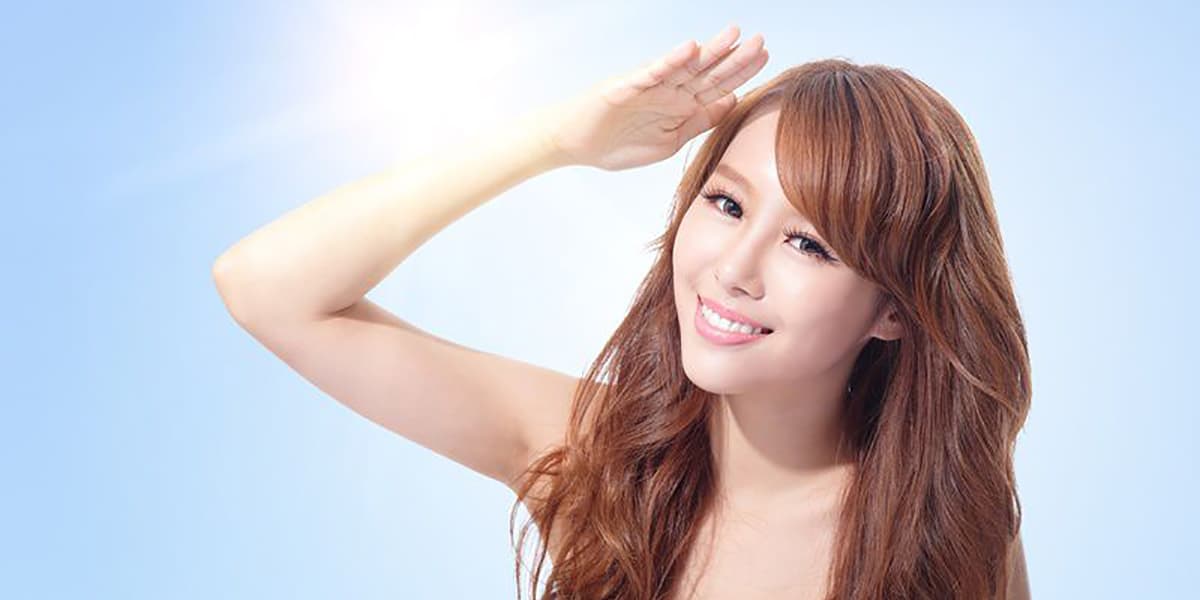While sunscreen has the potential to greatly reduce our risk of developing sun-related skin damage, it only provides its full level of protection if applied properly. It’s important to apply (and reapply) enough sunscreen. Despite the fine print that comes along with sunscreen use, it seems to remain the sun protection method of choice in American and Australian populations. However, those in East Asia are thinking outside of the sunscreen bottle.
According to a 2008 NHIS survey, more adult respondents said they wear sunscreen with an SPF of 15 or higher most of the time or always, compared to respondents using protective clothing and wide-brimmed hats.¹ In an Australian population, more adults used sunscreen with an SPF of 15 or higher compared to wearing a ¾ length or long-sleeved top, and staying in the shade.²
On the other hand, in a North Chinese population, 58.8% of those surveyed said they use sunscreen, while 49.3% said they use protective clothing, and 45.4% said they use a sun umbrella.³ Another study found that 33% of female Japanese pedestrians used sun umbrellas.⁴ Parasols, or sun umbrellas, are a great option if you want to enjoy outdoor activities without worrying about finding shade. By using a parasol, you can create shade wherever you go. Using sunscreen along with a sun umbrella offers more protection than sunscreen alone. The umbrella can prevent UV rays from reaching your skin, while sunscreen offers backup protection to shield you from rays that weren’t blocked by the umbrella.Perhaps beauty standards are part of the reason why alternative sun protection methods are common in East Asia. Unlike in North American and Australian culture, pale skin is sought-after amongst Chinese and Korean women.⁵ Living up to these beauty standards helps to minimize the risk of developing skin cancer. In Australia, where tanned skin is desirable, skin cancer accounts for 80% of all cancer diagnoses.⁶ In Asia, where pale skin is desirable, skin cancer accounts for only 1-2% of all cancer diagnoses.⁷Regardless of whether Asians are protecting their skin for health or aesthetic purposes, this behaviour may be partially responsible for the relatively low rates of skin cancer in these populations.
As far as sun protection goes, the Skin Cancer Foundation recommends seeking shade from 10am-4pm, and wearing protective clothing, a wide-brimmed hat, and sunglasses, along with using sunscreen.⁸ When used properly, sunscreen with an SPF of 30 blocks out 96.7% of sunburn-causing UVB rays. However, to effectively minimize our risk of developing skin cancer, we should be making use of all of these techniques together, rather than just one of them.
To avoid a sunburn, you can also use Sun Index. Available for iOS and Android, the free app lets you know how much sunscreen to apply. It also lets you know for how long you can stay outside with or without sun protection to let your body produce vitamin D naturally.Sources:
- Buller, D. B., Cokkinides, V., Hall, H. I., Hartman, A. M., Saraiya, M., Miller, E., Paddock, L. and Glanz, K. (2011). Prevalence of sunburn, sun protection, and indoor tanning behaviors among Americans: Review from national surveys and case studies of 3 states. Journal of the American Academy of Dermatology, 65(3):S114.e1-S114.e11. Retrieved August 15, 2016
- Volkov, A., Dobbinson, S., Wakefield, M. and Slevin, T. (2013). Seven-year trends in sun protection and sunburn among Australian adolescents and adults. Australian and New Zealand Journal of Public Health, 37(1):63-69. Retrieved August 15, 2016
- Cheng, S., Lian, S., Hao, Y., Kang, N., Li, S., Nie, Y. and Zhang, F. (2010). Sun-exposure knowledge and protection behavior in a North Chinese population: a questionnaire-based study. Photodermatology, Photoimmunology & Photomedicine, 26(4):177-181. Retrieved August 15, 2016
- Ng, W. and Ikeda, S. (2011). Use of Sun-Protective Items by Japanese Pedestrians. Archives of Dermatology, 147(10):1167-1170. Retrieved August 15, 2016
- Sarnoff, D. S. (2011). The Tale of Tanning. Retrieved August 26, 2016
- Cancer Council Australia. (2016). Skin cancer. Retrieved July 28, 2016
- Skin Cancer Foundation. (2016). Skin Cancer Facts & Statistics. Retrieved July 28, 2016
- Skin Cancer Foundation. (n.d.). Prevention Guidelines. Retrieved August 15,2016



